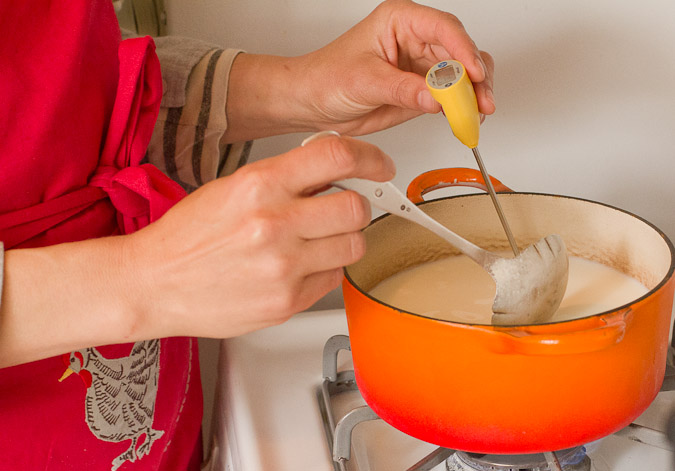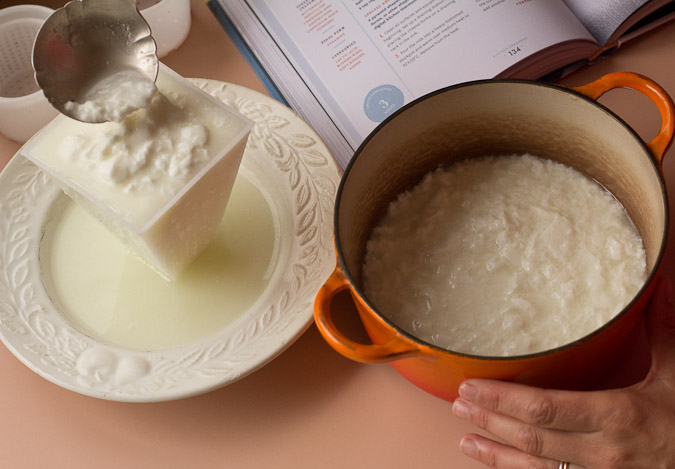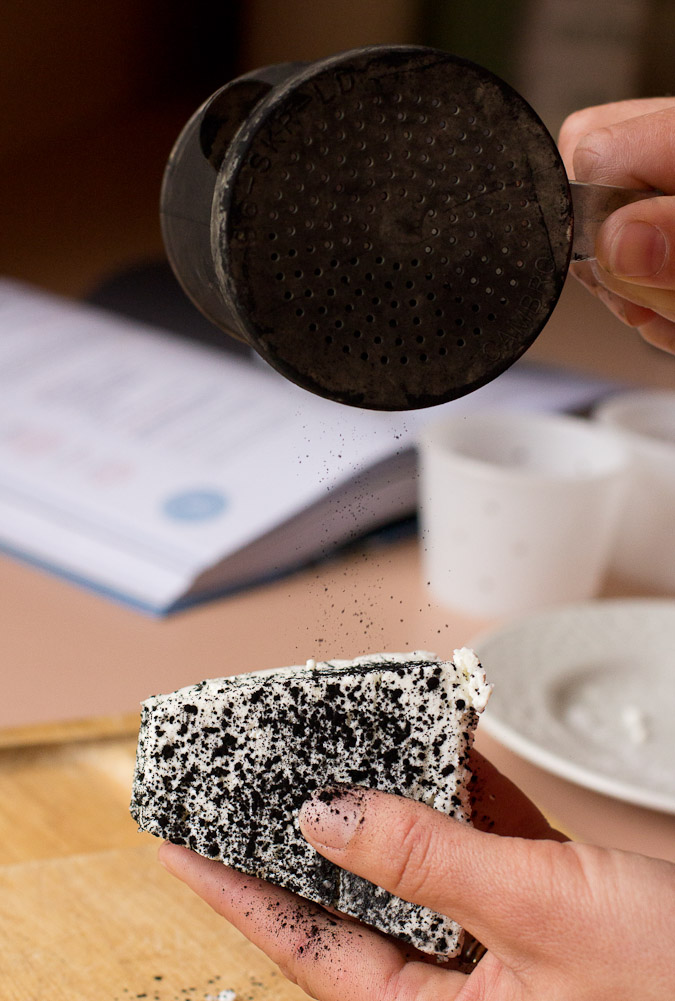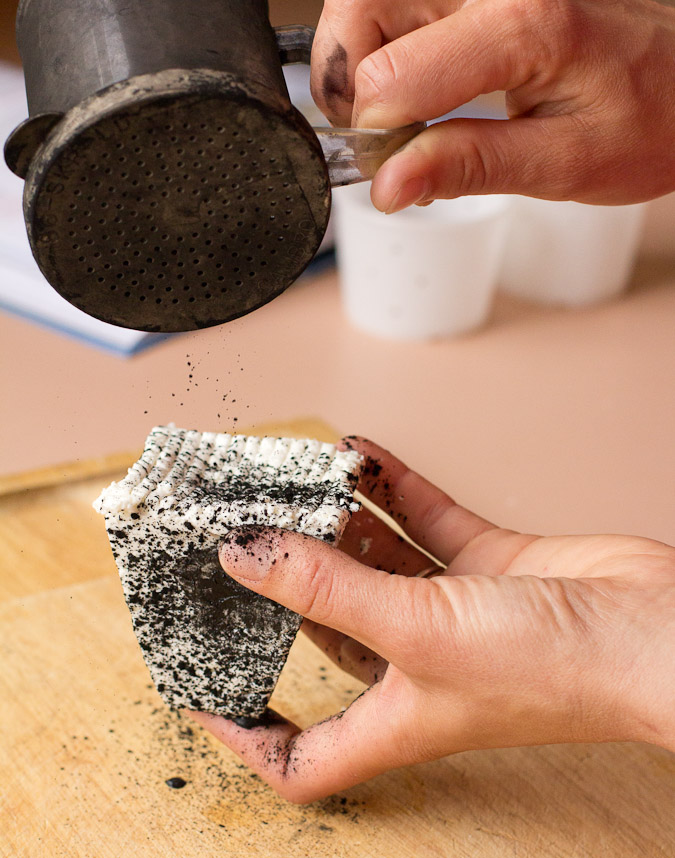Cheesemaking with the SF Milk Maid: Gosling goat cheese
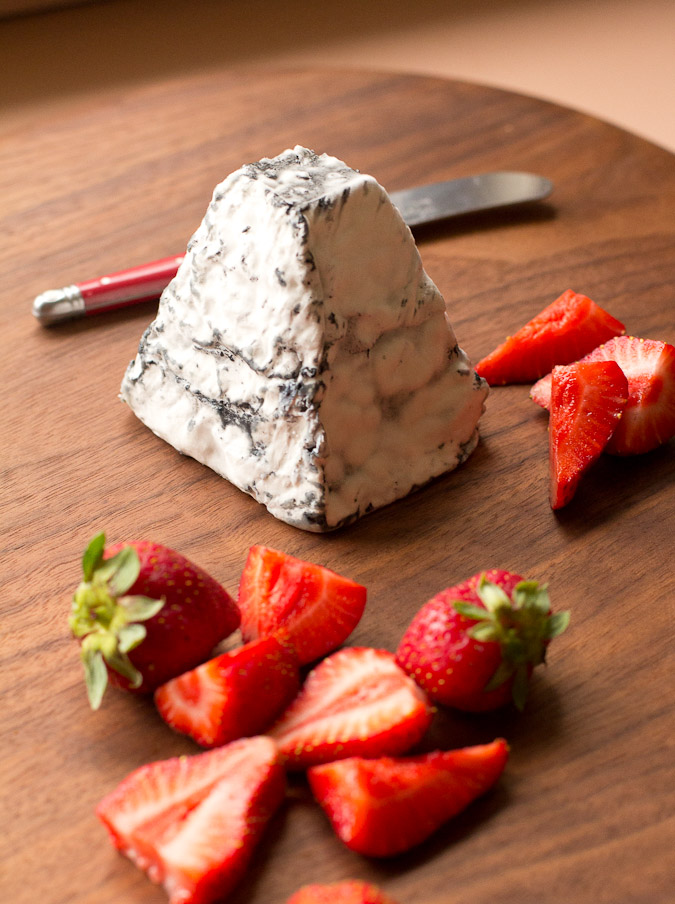 If you've ever taken a class with the SF Milk Maid or flipped through Louella Hill's new cheesemaking book, Kitchen Creamery, you've probably had a moment much like the ten or eleven of those I've had recently where you find yourself shaking your head in amazement, asking, how does one person know so much?
If you've ever taken a class with the SF Milk Maid or flipped through Louella Hill's new cheesemaking book, Kitchen Creamery, you've probably had a moment much like the ten or eleven of those I've had recently where you find yourself shaking your head in amazement, asking, how does one person know so much?
Louella's book is packed with more cheese types than you though any one human would be able to make, her hand-drawn illustrations accompany the wheels so one can see what rogue bacteria may be to blame if there are too many divets in your brie, and when Louella's not writing a book, she can be found teaching classes around the Bay Area. She kinda does a lot.
One of the original employees of Narragansett Creamery and the owner of SF Milk Maid, a cheesemaking business that teaches people how to properly stretch curds, Louella's got a breadth of cheese knowledge under her belt that far surpasses even the amount of cheese that the average French person keeps in their fridge during a year. And she's nice, and, a big believer in the glory of butter. In short, she's lovely.
So when the Louella asked me if I wanted to make Gosling with her at home, I said hell yes. My quick yes could have also been me wanting to make a cheese called Gosling, but mostly I said yes because I wanted to play with this lovely woman in the kitchen. Our cheese of choice? A Loire Valley-style, ashed goat cheese pyramid that looks like Valencay. It was the first time I worked with goat's milk since returning from Sleight Farms in Somerset, England, and I was beaming.
We'd make the Gosling in one day, she'd leave me with the newly formed pyramid, and then I'd baby and flip it in my fridge for two to three weeks until it passed through cheese adolescence into adulthood.
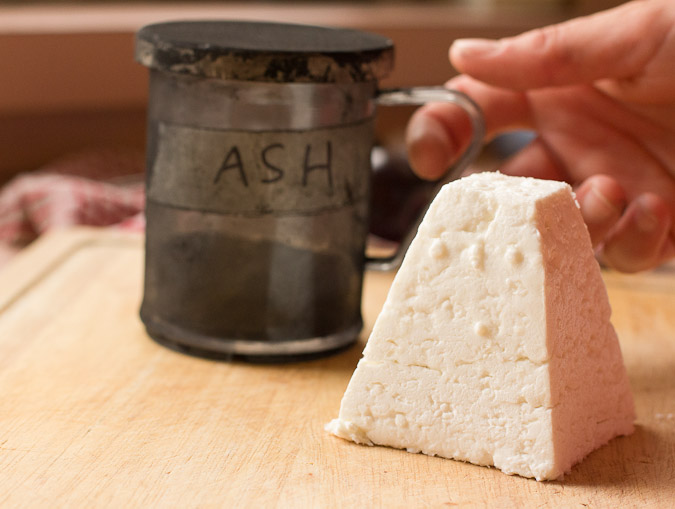
Louella's publishers were nice enough to share the recipe for the beauty below, but I'd also highly recommend Louella's book. It's beautiful, down-to-earth, and clear.
Thank you Louella, for cutting curds with me!
Gosling, Valency Style Cheese- adapted from Kitchen Creamery, Chronicle Books, 2015
These pyramid-shaped cheeses are pure entertainment. At first, they’re firm, geometric and black with ash: brand new. A week later, they’re fuzzy and gray: adolescent. With time, they become white with softened edges: middle-aged. Finally, they slump as the insides become soft: mature. This recipe can be made with cow milk if goat milk is not available and, traditionally, Valencay is an unpasteurized cheese. This recipe is very similar to the Chevre on page XX.
2 gal goat milk 2 tbsp buttermilk 4 drops rennet, undiluted pinch of Penicillium candidum mold powder tinier pinch of Geotrichum mold powder 2-3 tsp salt
Materials: 4 pyramid-shaped cheese forms, 2 tsp food-grade vegetable ash Yield: three to four pyramids, ~8 oz/237 ml each 1. Pour milk in a pot and warm to 72˚F/22˚C. Turn off the heat.
3. Add buttermilk plus mold powders then stir in gently.
4. Now add the 4 drops of rennet. Stir the rennet in then cover the pot and leave in a warm, undisturbed location (free of cold drafts or vibrations) for 15 to 17 hours. If needed, incubate the pot to keep the temperature from fluctuating too much. When curd has firmed up, you will notice a small amount of yellow whey collected on the top and sides of the curd block.
5. Using a ladle or large spoon, scoop curds into clean pyramid forms. It may seem there is too much curd for too few forms. Wait 10 to 15 minutes for the level of the curds to drop, and then fill them to the top again. Continue doing this until all the curd has been used. If clear that the curd amount is disproportionate, add another pyramid form. Set filled pyramids inside a tall, clean plastic aging bin, with an aging mat inside on the bottom. Place lid on tub and allow pyramids to drain for 4 hours. You will need to periodically remove whey from the tub so that the cheese is not sitting in liquid.
7. After 4 hours, invert the pyramids on the aging mat (when cheese has firmed enough to allow you to do so). Pour off any whey as it accumulates in the bottom of the bin.
8. After another half day at room temperature, remove cheese from their forms. Drain and dry the plastic tub, then return cheeses to tub (without forms). Set them them on top of the aging mats.
9. Sprinkle each pyramid with ½ -3/4 tsp of salt over all surfaces as evenly as possible. Allow salt to soak in the salt while continuing to draining in covered bin at room temperature (removing built up whey from the bottom of the container as needed). Drain for 12 more hours.
11. Once cheeses have stopped releasing whey, cover them with vegetable ash; In a draft-free area, use a saltshaker filled with ash to sprinkle all surfaces of each pyramid.
12. Finally, move the salted, ashed cheeses to a dry bin. Set on top of dry, clean mats. Cover with lid and place in the refrigerator for 3 – 4 weeks. Twice a week, rotate the cheeses and remove accumulated moisture. When the cheeses are covered in a downy grey / white mold, they are done. Wrap in breathable cheese paper and store in the refrigerator for up to 3 more weeks.






